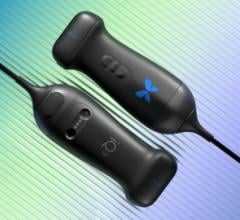August 11, 2014 — Imaging experts from the American Society of Echocardiography (ASE) released a paper, "Guidelines for the Cardiac Sonographer in the Performance of Contrast Echocardiography: A Focused Update from the American Society of Echocardiography,” to help clinicians optimize and demystify the use of ultrasound contrast media in medical imaging. This new guideline aims to expand the use of ultrasound enhancing agents in patient testing, particularly in new and growing areas of cardiovascular care.
The writing group for this updated guideline was chaired by Thomas R. Porter, M.D., FASE, the Theodore F. Hubbard Distinguished Chair of Cardiology at the University of Nebraska Medical Center, in Omaha, Neb. Porter noted that there is “a significant need for sonographers and physicians to be updated on software and techniques that are available to enhance technically difficult echoes, which are most common in overweight patients or those in critical care units who cannot be easily positioned for optimal imaging. This enhancement not only allows sonographers to better detect myocardial ischemia at rest and during stress echocardiography, but also is useful in enhancing Doppler signals and assessing intra-cardiac masses.”
Many technological and clinical advances have occurred since the publication of the original ASE document in 2001, “Guidelines for the Cardiac Sonographer in the Performance of Contrast Echocardiography: Recommendations of the American Society of Echocardiography Council on Cardiac Sonography,” necessitating the need for this update to ensure that clinicians are aware of the new options. The addition of these intravenous agents has been proven to greatly enhance sub-optimal images and lower the need for repeat imaging studies and thus provide more efficient patient care.
While ultrasound enhancing agents have been commercially available for more than two decades, it is estimated that less than 10 percent of all echocardiograms utilize this valuable tool, despite the fact that at least 20 percent of all echoes are believed to be sub-optimal and would benefit from enhancement. Ultrasound enhancing agents are underutilized today for a wide variety of reasons; both patients and clinicians are often reluctant to use ultrasound contrast because they mistakenly associate it with the contrast agents used for computed tomography (CT) and magnetic resonance imaging (MRI).
While those “classic” contrast agents use ionizing radiation and nephrotoxic agents, ultrasound contrast does not contain either of these, and has a very low incidence of harmful side effects or adverse events. According to Porter, this paper “will help sonographers to better utilize ultrasound enhancing agents and build programs at their institutions by providing important information on the safety and efficacy of ultrasound enhancement in a wide variety of clinical situations.”
In conjunction with the publication of the guideline document, Porter will conduct a live webinar, including a question and answer section, on Sept. 10, 2014 at 1 p.m. ET, which will be available for free to all ASE members and other clinicians for a fee of $25. To facilitate education for those who cannot attend the live webcast, an archived version of this webinar will be available on www.ASEUniversity.org to those who pre-register.
For more information: www.onlinejase.com, www.asecho.org/guidelines


 April 18, 2024
April 18, 2024 








